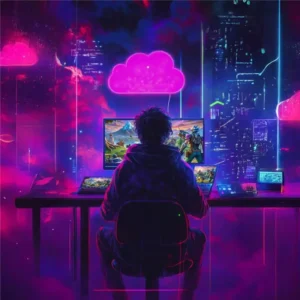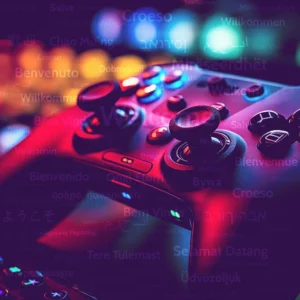
What makes a video game memorable worldwide? A lot of times, it is not the mechanics or the narrative; it’s that feeling that will often stay with the player. This feeling can be subtly shaped with one powerful tool: color. Color theory is an important aspect of level design in influencing mood, guiding behavior, and alchemically creating an immersive experience. Yet, so many designers let color fly right by, never quite giving gameplay the right boost it needs.
The Problem: When Visuals and Player Emotions Don’t Align
Of the common issues with level design, some of the most frequent offenders have to do with a collision between the look and feel of a game and the emotion behind it. You can make this incredibly hectic, high-stakes level, but if the colors don’t share in that intensity, then the effect on your player is suffered.
Soft, soothing blues in a high-speed car-chase scene-just aren’t going to cut it. In the same vein, overreliance on neutrals or poor color schemes can result in confused players who cannot find critical paths. The challenge then, is to make color not only match the tone of a game but to make it guide a player through a level seamlessly, enhancing emotion and function at the same time.
Setting the Mood with Color

Color has an inherent ability to influence mood, and this is especially important when it comes to building atmosphere in a game. Different hues innately evoke different ends of emotions, and a well-chosen color scheme can raise a level’s emotional impact without players even realizing why they feel one way or another. Warm colors — reds, oranges, yellows — can provide excitement, energy, or even urgency; great for high-speed action or tough gameplay. Cool colors — blues and greens — can be so much calmer or reflective to evoke pause or depth during more relaxed sections of the game. Black, white, and gray are neutral tones that provide visual relief, keying the rest of the key elements to pop out, or in other words, create visual pause moments in a visually heavy environment. They allow designers to form a narrative arc inside the level itself and can take players on an emotional ride while guiding their experience.
Color as a Behavioral Guide
In addition to setting the mood, colors serve as a guide for player behavior by offering cues for interaction or progression. Through consistent use of color coding, players can quickly understand how to navigate through the game or interact with specific objects, improving overall flow and reducing confusion. Primary colors are often used to distinguish important gameplay elements from the background, making interactions easier and more intuitive. Bright accent colors can highlight bonuses or special features, drawing attention to interactive elements that might otherwise go unnoticed. By aligning color with gameplay mechanics, designers create an instinctive understanding of the game’s logic, helping players learn without the need for extensive tutorials.
Another important aspect that can be covered under color is how color guides the players. For instance, if a certain path is critical for video game advancement, coloring that route with distinctive colors will make subtle suggestions for guidance to the players.
Color can also be used to denote danger areas, safe areas, and objectives; thus, it speeds up navigation without necessarily using words. Clever color design keeps players immersed in the game world, not just playing it, feeling, and reacting to every step.
It’s also important to make considerations for accessibility when adding color to the level design. For players that have color vision deficiencies, it may cause problems if important cues are color-based. You can create an experience more accommodating of an audience with vision defects by incorporating texture, shape, or brightness contrast in addition to the color.
GlobalStep’s Expertise in Elevating Game Design
At GlobalStep, we value how important it is to align the visual design with gameplay. From art direction to level design, our expert team sees to it that every color choice serves a purpose to further immerse the players, which heightens their experience. We will be able to assist studios in striking that perfect balance between creativity and clarity, guiding them through concept art all the way to the final polish for their levels.
With profound understanding and knowledge of Color Theory and Player Psychology, minute details are never left unnoticed when designing the environment of the game.
With our approach, studios can integrate perfectly into the video game development process, letting them focus on core mechanics while we make sure the visuals not only complement but elevate the experience. Whether you aim to craft a high-stakes battle or a more serene, exploratory journey, GlobalStep’s team will help you create stunning immersive worlds that resonate long after the controller is put down.




